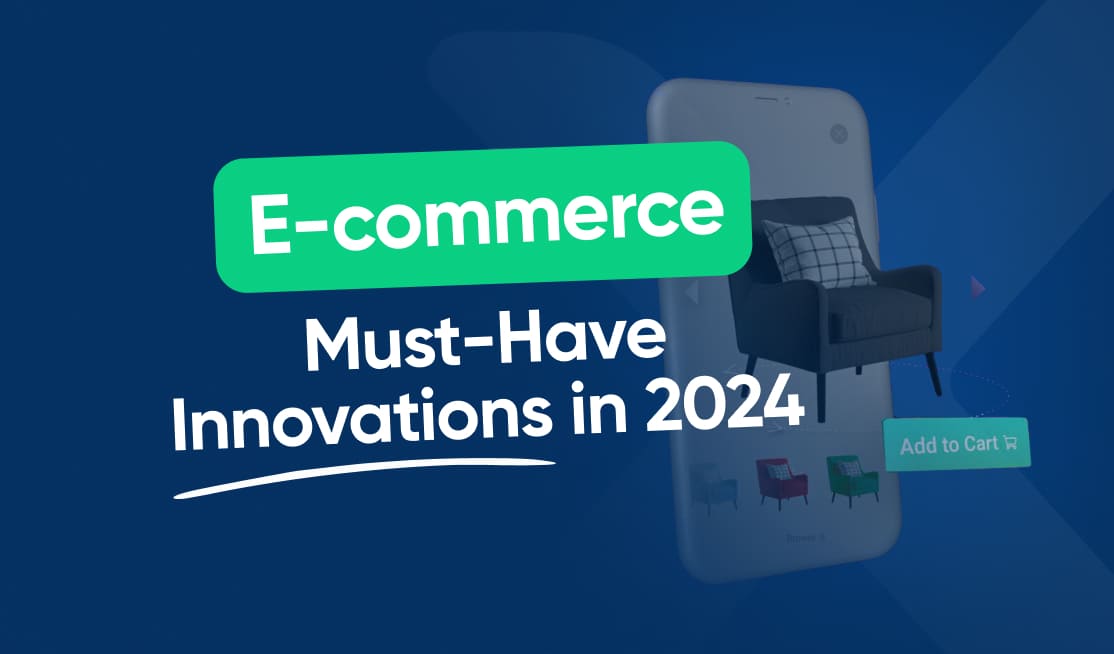
The future of e-commerce website design is an exciting and rapidly changing landscape. As technology continues to evolve, so does the way we shop and interact with online stores. In this article, we will explore the key trends and advancements that are shaping the future of e-commerce design, the role of user experience in this field, and the influence of social media on how we design online shopping experiences. Additionally, we will discuss the challenges and opportunities that lie ahead in this ever-evolving industry.
Understanding the Evolution of E-commerce Design
E-commerce design has come a long way since its inception. Initially, online shopping experiences were merely digitized versions of physical stores. However, as consumer behavior shifted towards online platforms, the need for more intuitive and user-friendly e-commerce designs arose.
Today, e-commerce design has become a crucial aspect of online businesses. It encompasses not only the visual appeal of a website but also the functionality and user experience it provides. Designers now focus on creating seamless and engaging interfaces that guide users through the purchasing process effortlessly.
From Physical Stores to Online Platforms
The transition from physical stores to online platforms has been driven by convenience and accessibility. Online shopping allows consumers to browse and purchase products from the comfort of their own homes, at any time of the day. As a result, e-commerce design has had to adapt to cater to these changing consumer preferences.
One of the key challenges in e-commerce design was replicating the sensory experience of physical stores. In physical stores, customers can touch, feel, and try on products before making a purchase. To bridge this gap, designers have incorporated high-quality product images, detailed descriptions, and even virtual try-on features to provide a more immersive online shopping experience.
Furthermore, the shift to online platforms has also brought about new opportunities for businesses. With the ability to reach a global audience, e-commerce design has evolved to accommodate multiple languages, currencies, and shipping options. This ensures that customers from different regions can easily navigate and make purchases on the website.
The Impact of Technological Advancements on E-commerce Design
Technological advancements have played a significant role in shaping the future of e-commerce design. From the widespread adoption of mobile devices to the rise of artificial intelligence and machine learning, these advancements have revolutionized the way we interact with online stores.
Mobile devices have become an integral part of our lives, and e-commerce design has adapted to this trend. Responsive design techniques are now employed to ensure that websites are optimized for various screen sizes, providing a seamless shopping experience across devices.
Artificial intelligence and machine learning have also made their mark on e-commerce design. Personalization has become a key focus, with algorithms analyzing user behavior and preferences to provide tailored product recommendations. Chatbots have also been introduced to enhance customer support, providing instant assistance and resolving queries in real-time.
Another technological advancement that has impacted e-commerce design is augmented reality (AR). AR allows customers to visualize products in their own environment before making a purchase. This technology has transformed the way customers shop for furniture, clothing, and even cosmetics, as they can now see how these products would look and fit in their homes or on their bodies.
In conclusion, e-commerce design has evolved significantly over the years to meet the changing needs and expectations of online shoppers. From replicating the sensory experience of physical stores to leveraging technological advancements, designers continue to push the boundaries of what is possible in creating engaging and user-friendly e-commerce platforms.
Key Trends Shaping the Future of E-commerce Design
Several key trends are currently shaping the future of e-commerce design. Staying on top of these trends is crucial for businesses looking to provide exceptional online shopping experiences.
As technology continues to advance at a rapid pace, e-commerce design is evolving to meet the changing needs and expectations of consumers. Let’s take a closer look at some of the key trends that are shaping the future of e-commerce design.
Mobile-First Design
With the increasing prevalence of smartphones and tablets, optimizing e-commerce websites for mobile devices has become imperative. Mobile-first design focuses on creating seamless and intuitive experiences for users accessing online stores through their mobile devices.
Mobile-first design involves considering the unique challenges and opportunities presented by mobile devices, such as smaller screens and touch-based interactions. By prioritizing mobile design, businesses can ensure that their websites are accessible and user-friendly for the growing number of mobile shoppers.
Furthermore, mobile-first design goes beyond simply making websites responsive. It involves designing specifically for mobile devices, taking into account factors such as load times, navigation, and the overall user experience. By adopting a mobile-first approach, businesses can provide a consistent and optimized shopping experience across all devices.
AI and Machine Learning in E-commerce Design
Artificial intelligence (AI) and machine learning have the power to revolutionize e-commerce design. These technologies can provide personalized recommendations, streamline the purchasing process, and enhance customer service through chatbots and virtual assistants.
AI-powered recommendation engines analyze customer data and behavior to provide personalized product suggestions, helping users discover new items they may be interested in. By leveraging machine learning algorithms, businesses can create highly targeted and relevant recommendations, increasing the likelihood of conversion and customer satisfaction.
Additionally, AI and machine learning can automate various aspects of the purchasing process, making it more efficient and convenient for shoppers. For example, chatbots and virtual assistants can assist customers with product inquiries, offer real-time support, and even process transactions. This not only improves the overall customer experience but also reduces the workload on customer service teams.
Personalization and Customization
Personalization and customization are becoming increasingly important in e-commerce design. Tailoring the shopping experience to individual preferences and needs can significantly improve customer satisfaction and drive repeat business.
By collecting and analyzing customer data, businesses can gain insights into individual preferences, purchase history, and browsing behavior. This information can then be used to create personalized shopping experiences, such as recommending products based on past purchases or displaying relevant content based on user interests.
Furthermore, customization options allow customers to personalize products to their liking, creating a sense of ownership and uniqueness. From customizable clothing and accessories to personalized engraving on electronics, offering customization options can enhance the overall shopping experience and foster customer loyalty.
In conclusion, the future of e-commerce design is shaped by trends such as mobile-first design, AI and machine learning integration, and personalization and customization. By embracing these trends, businesses can stay ahead of the curve and provide exceptional online shopping experiences that meet the evolving needs and expectations of consumers.
The Role of User Experience in E-commerce Design
User experience plays a critical role in the success of e-commerce websites. Consumers expect seamless navigation, intuitive interfaces, and engaging visuals when shopping online.
When it comes to e-commerce design, user-centricity is key. User-centric design puts the needs and preferences of users at the forefront of the design process. By understanding the behaviors and motivations of consumers, designers can create online shopping experiences that cater to their expectations and preferences.
One of the main reasons why user-centric design is so important in e-commerce is because it helps build trust and loyalty with customers. When users feel that a website understands their needs and provides a seamless shopping experience, they are more likely to return and make repeat purchases.
Enhancing user experience through interactive design is another crucial aspect of e-commerce design. Interactive design elements, such as animations, microinteractions, and product visualization, can greatly enhance the user experience. These elements make the online shopping process more engaging, immersive, and enjoyable for users.
Animations, for example, can be used to guide users through the different stages of the shopping process. They can provide visual cues and feedback, making it easier for users to understand how to navigate the website and complete their purchase.
Microinteractions, on the other hand, are small, subtle design elements that provide feedback and create a sense of delight for users. They can be as simple as a button changing color when hovered over or a progress bar indicating the status of a transaction. These small interactions may seem insignificant, but they contribute to the overall user experience and can make a big difference in how users perceive a website.
Product visualization is another powerful tool in enhancing the user experience. By providing high-quality images, 360-degree views, and even virtual reality experiences, e-commerce websites can help users get a better understanding of the products they are interested in. This not only increases user engagement but also reduces the likelihood of returns and customer dissatisfaction.
In conclusion, user experience is a crucial factor in the success of e-commerce websites. By adopting a user-centric approach and incorporating interactive design elements, designers can create online shopping experiences that are intuitive, engaging, and enjoyable for users. This, in turn, leads to increased customer satisfaction, loyalty, and ultimately, business success.
The Influence of Social Media on E-commerce Design
Social media has become an integral part of our lives, and its impact on e-commerce design cannot be ignored. Businesses are leveraging social media platforms to reach and engage with a wider audience, thus transforming the way online stores are designed and operated.
Social Media Integration in E-commerce Websites
Integrating social media features into e-commerce websites allows users to share their purchases, reviews, and recommendations with their social networks. This integration not only increases brand exposure but also builds trust and credibility among consumers.
The Rise of Social Commerce
Social commerce is a growing trend in e-commerce design, where users can make purchases directly within social media platforms. This seamless integration of shopping and social networking allows businesses to tap into the vast user bases of social media platforms.
Future Challenges and Opportunities in E-commerce Design
As the future of e-commerce design unfolds, it brings both challenges and opportunities for businesses to navigate.
Overcoming Design Challenges for Better User Experience
One of the key challenges for e-commerce designers is to create seamless and intuitive experiences across different devices and screen sizes. Designing for a range of devices, from smartphones to smart TVs, and ensuring consistent usability can be a complex task.
Seizing Opportunities in the Evolving E-commerce Landscape
The evolving e-commerce landscape presents numerous opportunities for businesses. With new technologies and trends emerging, businesses that embrace innovation and adapt quickly can gain a competitive edge in the market.
In conclusion, the future of e-commerce website design is dynamic and promising. Understanding the evolution of e-commerce design, embracing key trends, and prioritizing user experience are crucial for businesses aiming to thrive in this ever-changing industry. By leveraging the power of social media and embracing emerging technologies, businesses can stay ahead of the curve and capitalize on the endless opportunities that lie ahead in the evolving e-commerce landscape.


